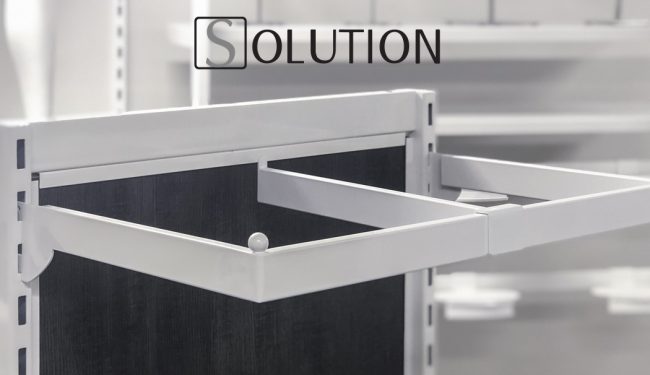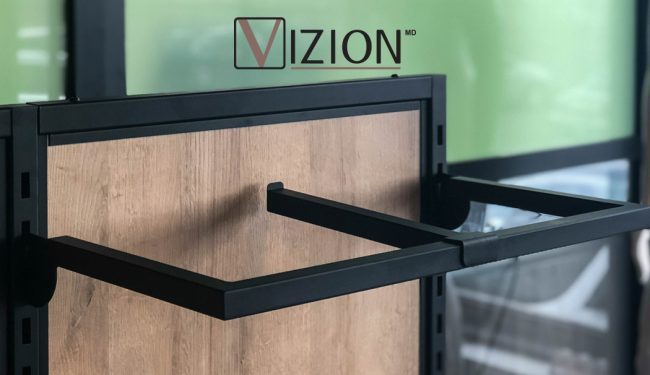Are you dreaming of opening a store, thinking about renovating your existing store or moving to a new commercial space? Congratulations! Opening or renovating a store is always an exciting experience, whether you’re offering clothing, food, products, sporting equipment or even decorative items. But watch out for the pitfalls that can cost you!
Here are 9 shop fittings traps to avoid when opening or renovating a store.
1. Not Maximizing the Impact of the Shop Window Layout
Staging your vitrines is the best way to communicate the DNA of your business, attract passers-by and encourage them to enter. Visual merchandising and the layout of your store using effective displays are items your customers come into contact with when approaching your store.
You don’t need to be a great designer to create shop fittings that makes a retail space appealing to customers and invites them to make a purchase!
Keep your target customers in mind, learn from the industry’s best practices, or from other business fields’ ideas that stood out to you because of their originality and effectiveness. Stimulate the senses of visitors, group products that make sense together while paying close attention to light and balance.
2. Not Dividing the Sales Floor into Separate Areas and not Making a Traffic Plan
Customers who walk through a store appreciate a certain logic to their journey. For example, in a sports store, the shop fittings should allow them to easily distinguish the footwear area from the camping area.
They leave the shoe area to head towards the cashier? What a good place to display high performance socks!
Think about the needs of your customers and their buying logic when designing your store. You’ll notice an increase in the average consumer basket and a decrease in questions related to the store’s orientation.
3. Not Making a Furniture Placement Plan and Choosing the Wrong Floor Displays for your Type of Business
Ensure coherence in the choice of floor displays by making a furniture placement plan and researching the best type of displays for the kind of business you are planning.
4. Not Evaluating the Placement of Products and not Making a Detailed Plan for Each Item’s Layout
Create a planogram to determine the most optimal placement for each item in your store and follow it when you physically arrange the merchandise.
Effectively displaying products based on their popularity and whether they are seasonal or specialized items is a real planning task, but it ultimately pays off.
5. Not using Promotional Displays in Shop Windows and in Stores
Promotional signage is another element that can drive traffic into your store and help customers find the products they are most likely to buy. It can also encourage them to discover new products through displaying interesting promotions.
In short, let your shop fittings work for you!
6. Not Offering the Necessary Comfort in Fitting Rooms
You want customers to feel good when they wear your clothes. That’s why it’s important that they have a pleasant experience when trying them on!
The layout of your store’s fitting rooms should provide a smooth fitting, which makes customers want to take their time and try on more clothes with the support of a sales consultant.
Opt for spacious cabins, with a full-length mirror and several hooks to hang clothes on. Who has never sorted clothes into “Yes”, “No” and “Maybe” piles while trying them on?
Also remember to provide seating furniture inside and outside the fitting rooms. Your clients may not be alone and you do not want their discomfort or their companion’s to precipitate the end of their experience in your store.
7. Not Thinking about the Strategic Placement of the Cashier
Another key element that should not be overlooked in shop fittings is the location of the cash counter. You must think of the strategy behind its location in the store based on the customer’s journey, but also on the counter’s various functions.
Besides the client’s ultimate destination at the time of purchase, the cash counter can also serve as a reception desk. Take a moment to determine your strategy before making a final decision on its location.
8. Not Optimizing Available Space on the Sales Floor and the Backroom (Warehouse)
Finding balance in the use of space is a challenge, but also a very important element in shop fittings.
You want to display an adequate volume and a variety of products while avoiding to overload the sales area.
On the back-shop side, you must have the ability to keep an inventory that supports your sales pace, but also ensure the safe handling of the merchandise as well as a storage and filing system that supports the efficiency of your store.
9. Not Taking the Mood and Lighting into Account
The shopping experience is also largely based on the ambience of your store, which is among other things attributable to the lighting you will have chosen. Powerful lighting is not always the best way to showcase your merchandise, just as dim lighting can affect the visibility.
Choose luminaires that match your store’s style and highlight your merchandise while creating a pleasant ambience that makes people want to spend time in your commercial space.
Shop fittings is not to be left to chance. It involves an important strategic planning that will have a real impact on your company’s revenue. Think about it carefully, avoid the pitfalls, and call on Elite’s experts to help you create a professional and original layout that will showcase your merchandise, whatever it may be.






